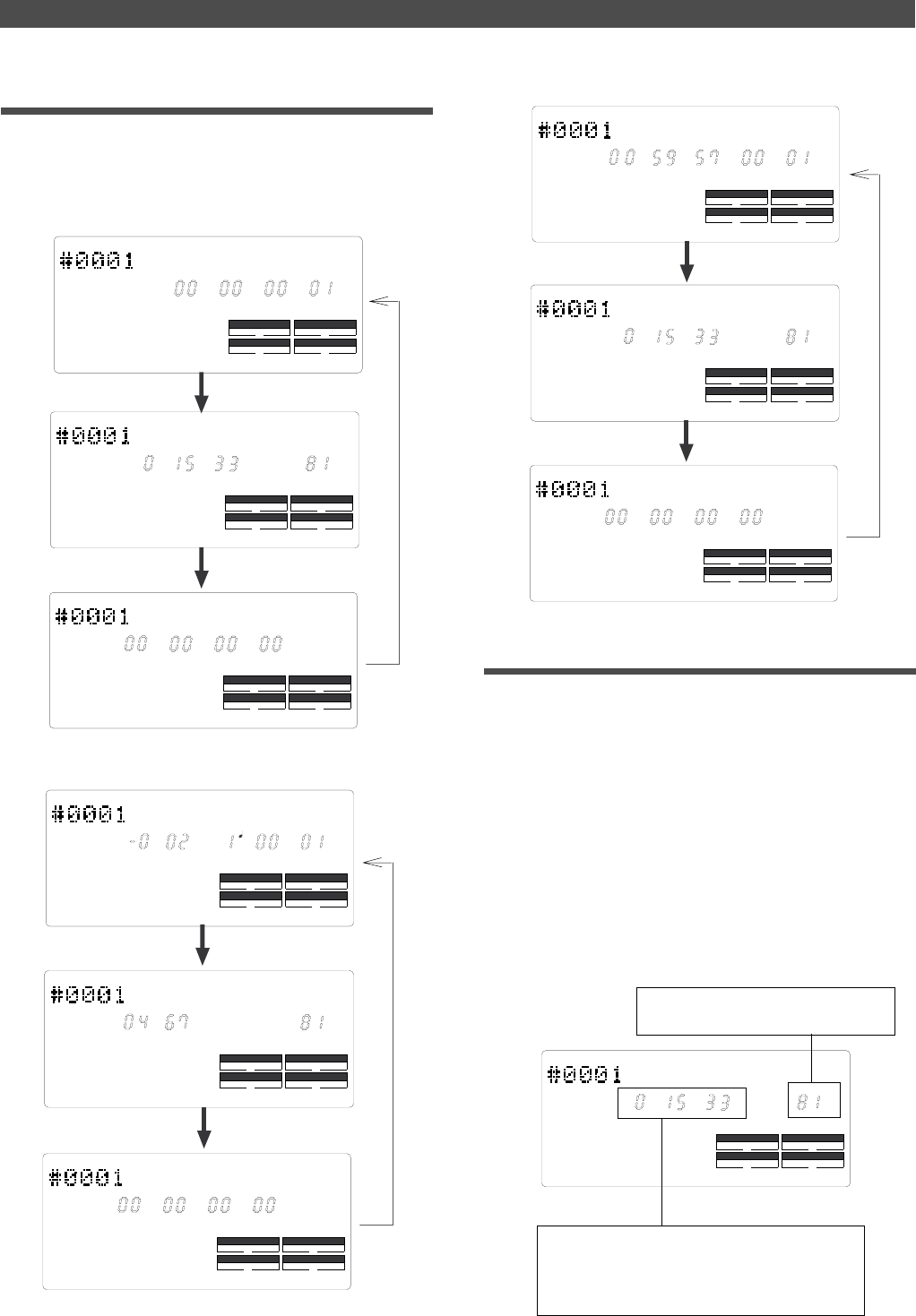
19
Names and Functions
ABS
44.1kHz
SM
F
DRIVE
AUTO A.PUNCH
SYNC OUT
PGM
CLK SCSI
44.1kHz
M
DRIVE
AUTO A.PUNCH
SYNC OUT
MB
CLK SCSI
REMAIN
H
S
MTC IN
44.1kHz
S
MF
DRIVE
AUTO A.PUNCH
SYNC OUT
CLK SCSI
H
MTC IN
44.1kHz
S
MF
DRIVE
AUTO A.PUNCH
SYNC OUT
CLK SCSI
H
BAR
CLK
DRIVE
AUTO A.PUNCH
SYNC OUT
PGM
CLK SCSI
44.1kHz
44.1kHz
BAR
DRIVE
AUTO A.PUNCH
SYNC OUT
MB
CLK SCSI
REMAIN
44.1kHz
M
DRIVE
AUTO A.PUNCH
SYNC OUT
MB
CLK SCSI
REMAIN
H
S
MTC IN
44.1kHz
S
MF
DRIVE
AUTO A.PUNCH
SYNC OUT
CLK SCSI
H
44.1kHz
M
DRIVE
AUTO A.PUNCH
SYNC OUT
PGM
CLK SCSI
MTC
H
S
F
44.1kHz
M
DRIVE
AUTO A.PUNCH
SYNC OUT
MB
CLK SCSI
REMAIN
H
S
Selecting Time Base using the DISP SEL key
When you press the DISP SEL key after you select a Time
Base using the TIME BASE SEL key, the display changes as
follows:
Time Base is ABS.
Time Base is BAR/BEAT/CLK.
Time Base is MTC.
This number indicates available recording
space on the disk for recording on a track.
This number indicates available recording time on the
disk for recording on a track. For example, if you record
on eight tracks, one-eighth of the indicated duration is
the available recording time for each track.
The REMAIN display
The REMAIN display usually shows available recording space
and time on the disk, calculated based on mono track recording.
That is, it indicates how much space and time are available for
recording on a track. Therefore, if you wish to know how much
time is available for multiple-track recording, you need to divide
the REMAIN value by the number of tracks you wish to record.
The value calculation includes all data from Real tracks and
Additional tracks. If some data exists on the Additional tracks,
but not on the Real tracks, the space and time consumed by
the Additional tracks are considered during the calculation.
For more information on the REMAIN display, refer to
“Recording method and REMAIN display” in the “Before
Starting” chapter on page 22.


















